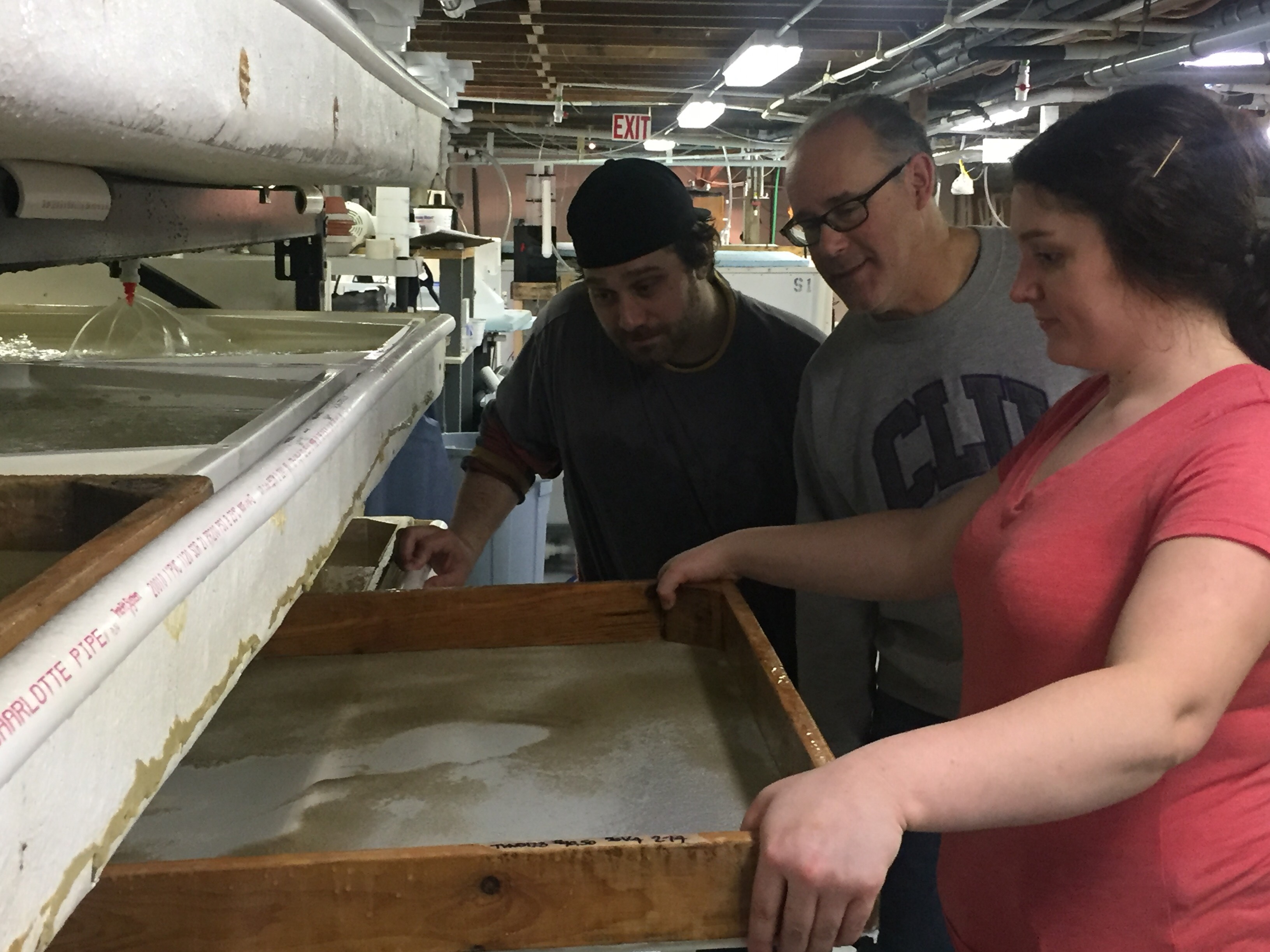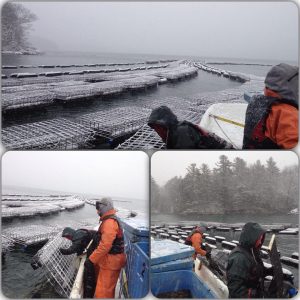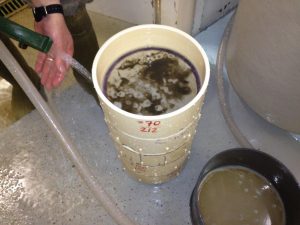
Hatchery Season

Here in early March in Maine, we are starting to get a bit of respite from the long nights, short days and bitter winds of winter. The sun shines more directly, puddles form in driveways and along the roadsides, and the voices of streams can be heard as the snowmelt begins. You may even have some greenery sprouting up on the windowsill, in a peat pot or paper cup. Things are happening.
In Maine’s shellfish hatcheries however, it’s been summertime for the last two months; humid air, temperatures in the 70’s, warm water, and a whole lot of light – not to mention the hustle and bustle of it all. For producers of shellfish seed, summer and the busy season come early.
The reasons for this are biology and latitude. Eastern oysters (Crassostrea virginica) and hard clams (Mercenaria mercenaria) are the two principal species produced in hatcheries in Maine and elsewhere, and both are summer spawners. Hatcheries try to reproduce temperatures, feeding rates, and daylight length (often referred to as ‘photoperiod’), to mimic conditions necessary to spawn. Since our two commercial hatcheries – Mook Sea Farm in Walpole, and Muscongus Bay Aquaculture in Bremen – send their products to states well to the south, they have to have their products ready for farmers in those warmer locations. This means creating summer, right in the dead of winter. As Bill Mook, owner of Mook Sea Farm mentioned last month: “The snow is heavy and the wind is howling, but the millions and millions of oysters in our hatchery are experiencing summer in February. We are spawning and setting like crazy in preparation for yet another busy season.”

The basics of the process are simple, but carrying them all off with precision, predictability and financial success is a complicated affair requiring skill, experience and a strong touch of art. First off, the shellfish parents – the broodstock – need to be brought up to spawning readiness, a process called conditioning. The adults are brought in from the cold outside waters in December or January, and gradually warmed up to about 74 degrees Fahrenheit. For food, they are given increasing amounts of phytoplankton, which also is grown in the hatchery and which is its own art form. As the shellfish fatten up, they develop eggs and sperm, and are ready for spawning.
In oysters and hard clams, males and females are separate (some shellfish are hermaphroditic), but telling male from female is generally not feasible just by looking at them from the outside, so hatchery operators try to spawn many individuals at once. This improves the chances of getting enough males and females, and broadens the genetic composition. (to make matters worse, oysters can switch from one sex to the other from one year to the next, so even tagging a shell doesn’t help there!)
The shellfish will often spawn if given a thermal shock. This is done by placing them together in a shallow water bath, and then gently pouring a small amount of warmer water into the bath, which increases the water temperature a few degrees, quickly. This rapid change in water temperature often results in a visible release of eggs and sperm. Once an individual animal begins to spawn, it’s removed from the group and placed in an individual container, filled with clean, highly-filtered seawater. In this way, sperm and eggs can be collected from several individuals and mixed precisely to produce genetic variation, and to avoid the damaging over-fertilization of individual eggs, a process called polyspermy.
Once fertilized, the larval oysters or clams are held in tanks, fed several times daily, and develop over the course of about two weeks. During this time they go through several developmental stages, even growing a small foot, which they use to detect proper substrate. When the larvae are ready, they will undergo a true metamorphosis, drastically changing their body shape into the form that you eventually recognize as an oyster or clam. In the case of oysters, they cement themselves to a small piece of chipped oyster shell, and that’s the end of their lives as mobile organisms. Both settle out of the water column at less than half a millimeter…visible, but barely!
Once settled, they begin a whole new stage of care for the hatchery staff: transfer into floating trays, then to an upweller or downweller system. As they reach about two millimeters, the millions of juvenile shellfish start to require so much algal feed that it’s efficient for the hatchery to sell them to the grower for placement in nature. In two or perhaps three seasons, they’ll be ready for the table.
